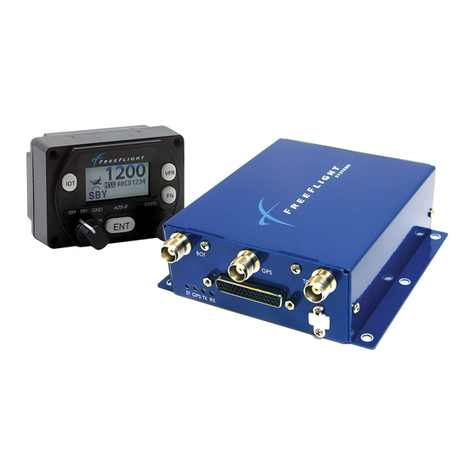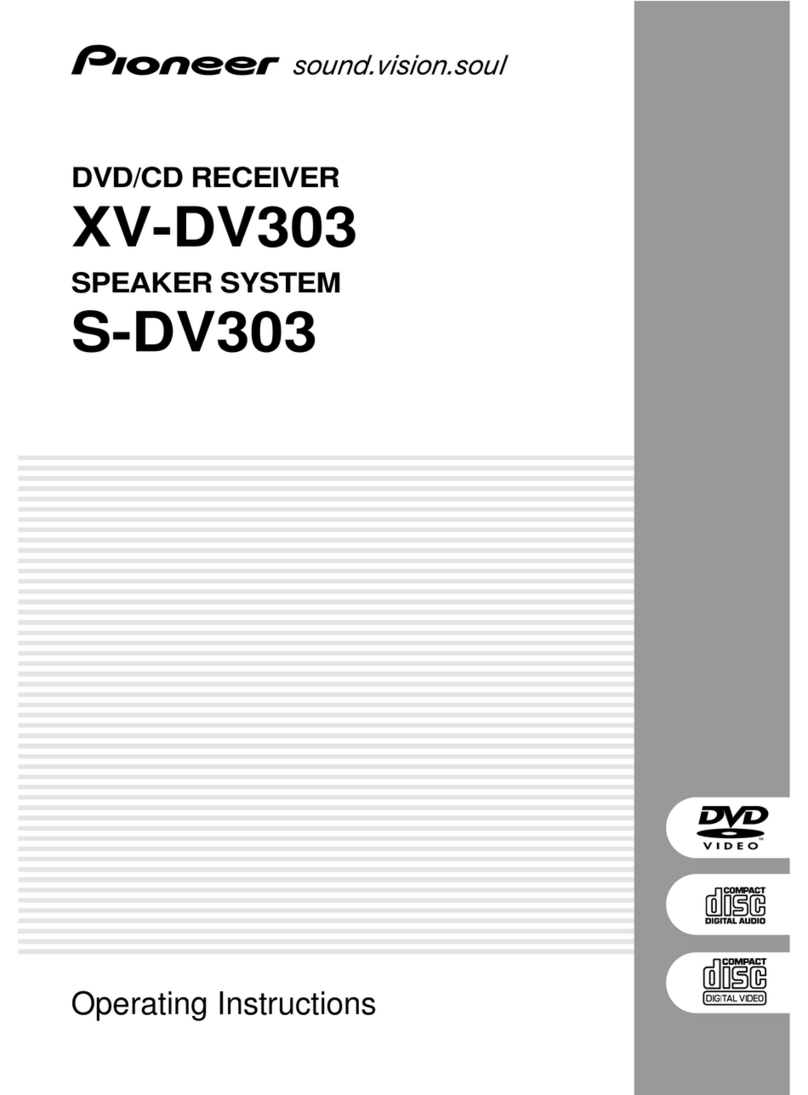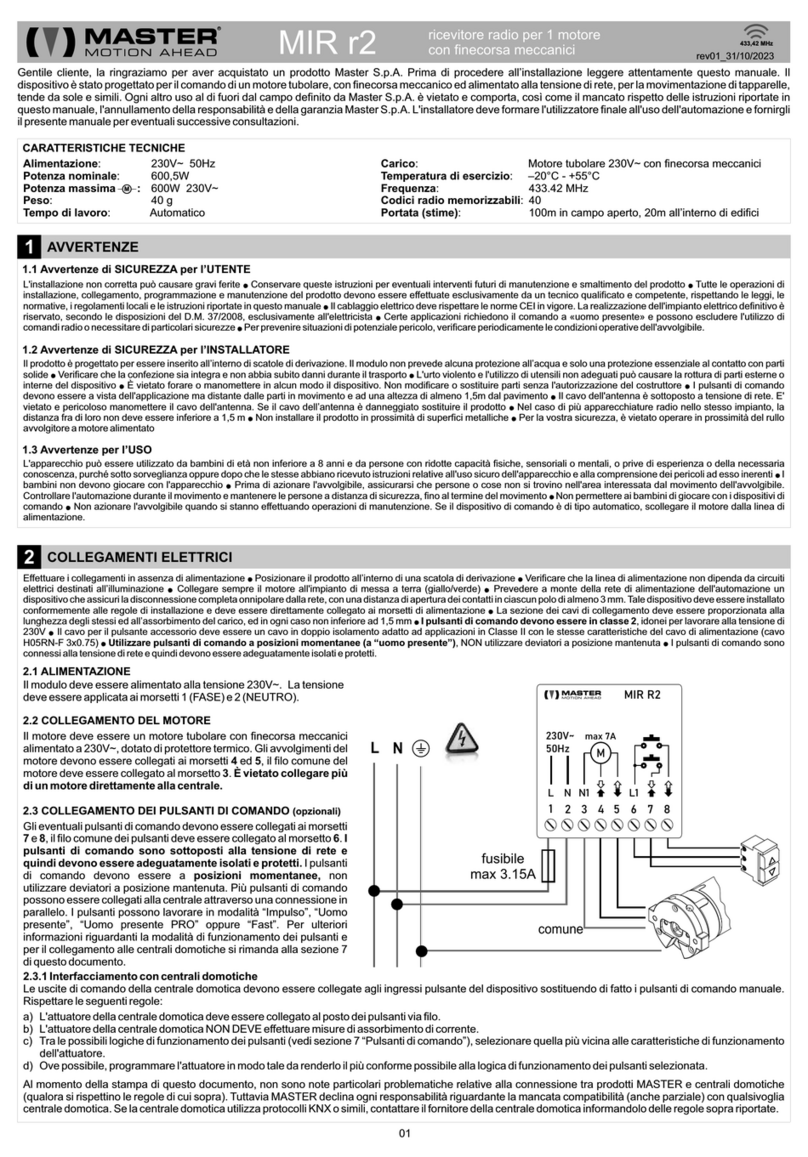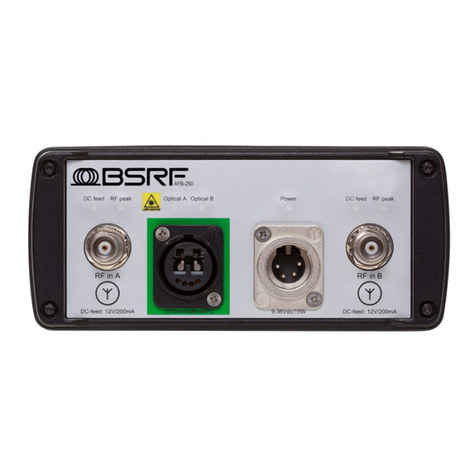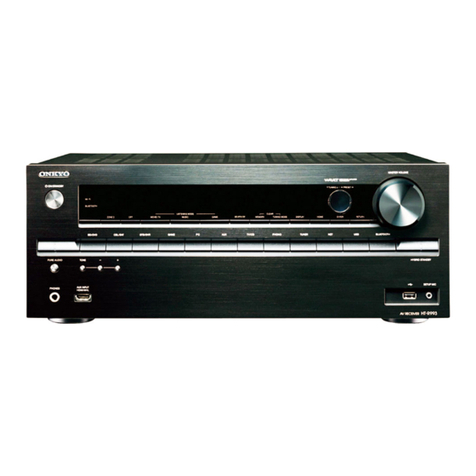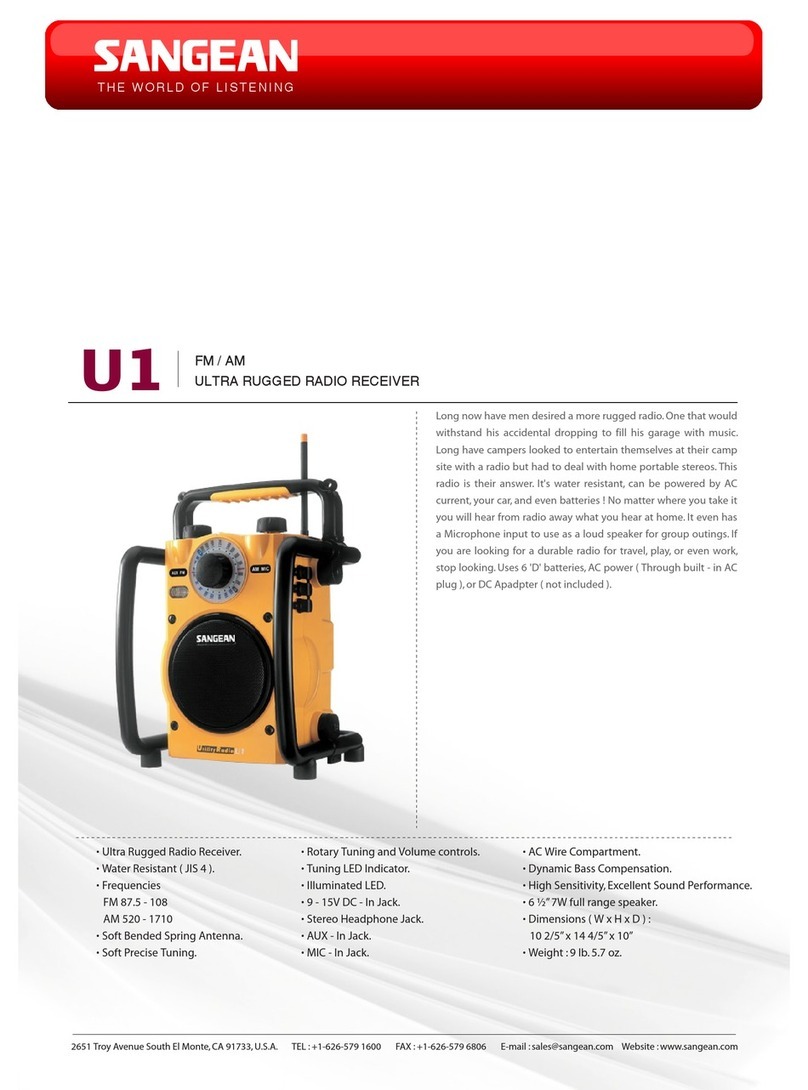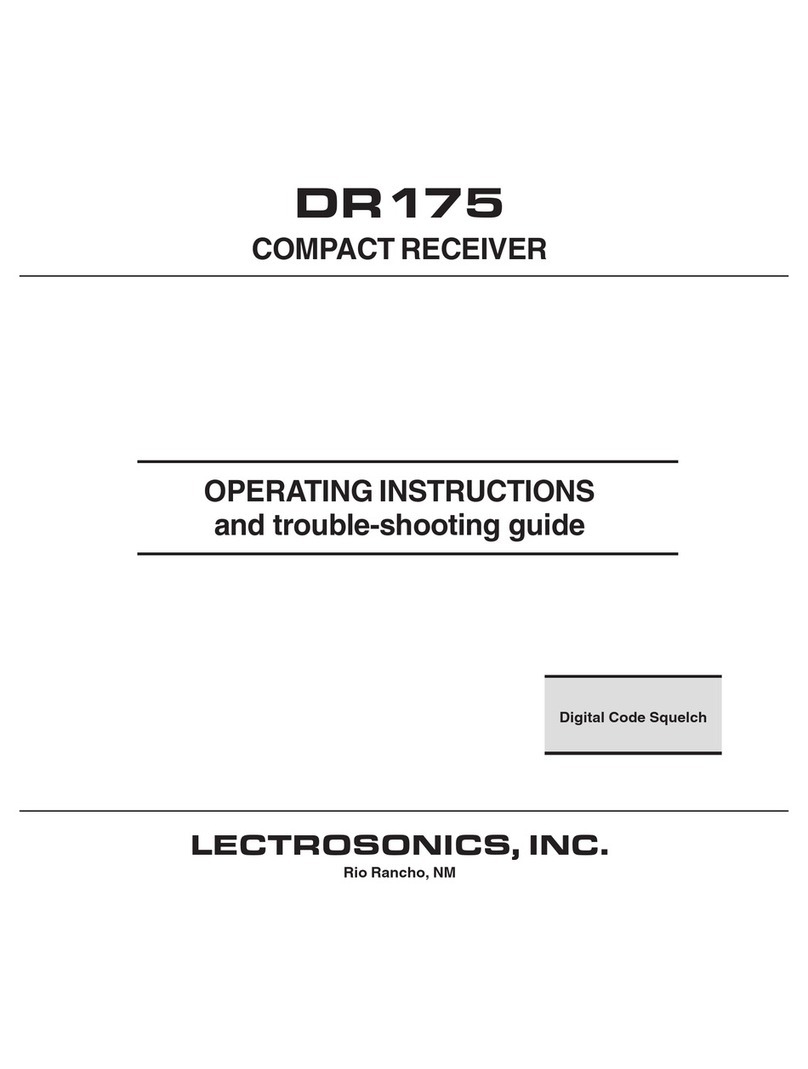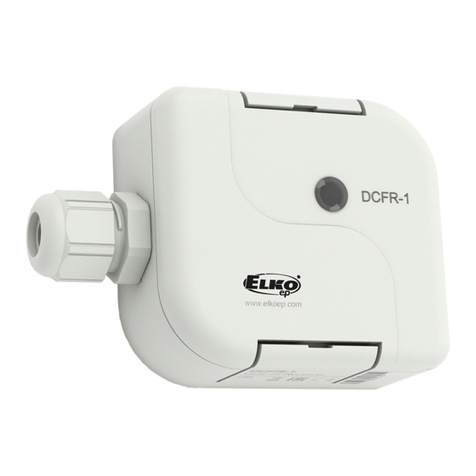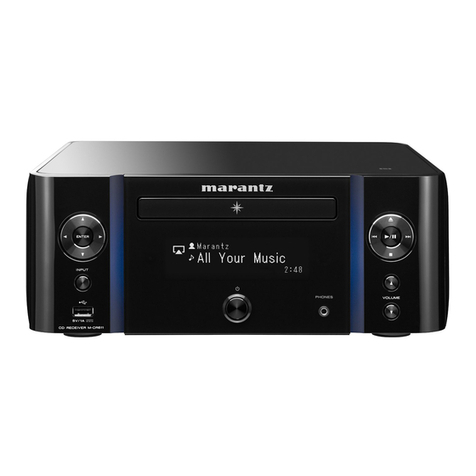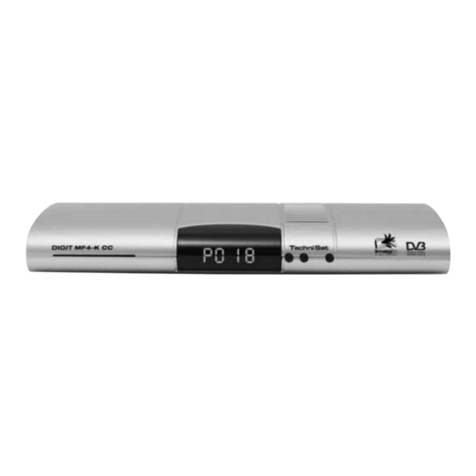Telemetrics CP-RMR-S User manual

Operation & Installation Manual
Serial Receiver
Model CP-RMR-S
92 50939 000
P/N 92 50939 000-11

Table of Contents
1.0 Scope .....................................................................................................................2
2.0 Introduction.............................................................................................................2
3.0 Specifications .........................................................................................................2
4.0 Control Commands...................................................................................................3
5.0 Installation and Hook-up...........................................................................................3
6.0 Connector Function..................................................................................................7
7.0 DIP Switch Settings..................................................................................................8
List of Figures
Figure 1 Front View........................................................................................................3
Figure 2 Rear View.........................................................................................................3
Figure 3 Power Supply Cable..........................................................................................4
Figure 4 Control/Power Cable ........................................................................................5
Figure 5 Serial Data Cable.............................................................................................5
Figure 6 Typical System Hook-up Diagram....................................................................5
Figure 7 DIP Switch Settings for Lens Function and Baud Rate....................................8

2
1.0 Scope
This manual contains installation and operational information for the Telemetrics
Serial Receiver Model CP-RMR-S, Part No. 92 50939 000. The unit is a pan/tilt
and lens controller that can be used with up to four cameras.
2.0 Introduction
The CP-RMR-S is a serially addressable pan/tilt and lens controller. It receives
RS-232 or RS-422 input commands from either a control panel or computer.
The output signals are used to control pan, tilt, zoom and focus servos for up to
four robotic camera control units and cameras. These functions can operate in
proportional mode or in preset mode. The unit incorporates external DC power
and control signals for the pan/tilt onto one cable. Optional output functions such
as Iris Control and Trolley Control are also available.
3.0 Specifications
Communications RS-232 or RS-422 bi-directional serial port
300-38,400 BPS (9600 default), 8 bits, no parity,
1 stop bit
Proportional Control 15 bit resolution
Simultaneous control of pan, tilt, zoom and focus
Operating Modes Open loop (proportional velocity) or closed loop
(positional)
Preset Control 16 Presets per camera
±0.25° error (12 bit resolution)
Preset Feedback Voltage 0 to 10VDC nominal (up to ±170° Pan and Tilt)
Weight 9 lbs. (4 kg)
Dimensions 19 “W x 1¾”H x 12½”D
Power 120 VAC, 10 Watts

3
4.0 Control Commands
Control is accomplished by sending commands consisting of ASCII characters
terminated by an ASCII carriage return (<CR>, hex 0D). In most cases, several
commands may be sent together on the same line before sending the <CR>.
However, in the case of the recall preset command, other commands may
precede it but any commands following it on the same line are ignored. A
command line will not be executed until the <CR> is received. ASCII backspace
(<BS>, hex 08) can be used to correct errors in the command line. After the
command line has been executed, a <CR> will be sent back to the host to
acknowledge completion.
Communication rate is 9600 BAUD. Protocol is 8 data bits, one stop bit, and no
parity.
5.0 Installation and Hook-up
The Serial Receiver is designed to mount directly into a 19-inch rack
configuration. The front of the unit has an AC power switch and a Ready light.
The light will illuminate when the power switch is turned to the on position and
the unit boots up. See Figure 6 for a typical system hook-up diagram.
Figure 1 Front View
There are six connector ports on the rear of unit which are identified below:
Figure 2 Rear View
1. Serial Communication (9 D-sub female connector)
2. Camera Interface Port (25 D-sub female connector)
3. Pan/Tilt power input (15 D-sub male connector)
4. 120 VAC power cord

4
Power to the head is made via interconnect cable 69083 (figure 3) to the 15 D-
sub connector on the rear of the unit. The configuration of the power supply
(single, dual, triple or quad) depends on how many pan/tilt heads are being
controlled. The other end of interconnect cable connects to the external power
supply.
Figure 3 Power Supply Cable
1
9
1
9
WIRESIDE
W
I
R
E
S
I
D
E
15DFemale
1
5
D
M
a
l
e
ToPresetPanel
T
o
P
o
w
e
r
S
u
p
p
l
y
8
15
8
1
5
1
2
3
4
5
6
7
8
9
10
11
12
13
14
15
NotUsed
+15V
+15VRET
+15V
+15VRET
+15V
+15VRET
+15V
+15VRET
1
2
3
4
5
6
7
8
9
10
11
12
13
14
15

5
Communication to the robotic camera control unit is made via control/power
cable CA-CP (92 53074 XXX). The output signals are used to control pan,
tilt, zoom and focus servos for a single pan/tilt unit and camera.
Figure 4 Control/Power Cable
Communication to the receiver from the control panel is made via serial data
cable 92 51349 XXX to the 9 pin serial data connector located on the rear of
the unit. Units built for RS-232 can have a maximum distance of 100 feet
between the unit and the control panel. Units built for RS-422 can have a
maximum distance of 4000 feet between the unit and the control panel.
(Note: Units are built to accept either RS-232 or RS-422 at the factory. Verify
which type of unit is being used.)
Figure 5 Serial Data Cable

6
Rack Mount Power Supply
PS-RM-4
Serial Cable
CA-RS
CA-CP-XXX
Control/Power Cable
Rack Quad Serial
Control Panel
CP-RMQ-S
C A - P S
Serial Control Receiver
CP-RMR-S
POWER
READ Y
POWER
READ Y
LOCAL/REMOTE PRESET CONTROL UN IT
T
I
L
T
CAMERA
1 2 3
4
Z
O
O
M
FOCUS ENTERSHO T
READY
SHOT
1
9
13
5
2
10
14
6
3
11
15
7
4
12
16
8
PAN
Compact Pan/Tilt
PTO-CP-P
Compact Pan/Tilt
PTO-CP-P
Compact Pan/Tilt
PTO-CP-P
Compact Pan/Tilt
PTO-CP-P
Figure 6 Typical System Hook-up Diagram

7
6.0 Connector Function

8
7.0 DIP Switch Settings
The DIP switch settings on the 50516 PC Board may be changed to set
communication baud rate and to change the polarity of zoom and focus pots and
joysticks. (Important: Unit must be turned off and on after changing settings.)
Figure 7 shows the switch settings for different baud rates and certain lenses.
Consult the factory for lenses other than those shown in Figure 7. (Note: All
lenses come modified from the factory. If a lens requires field modification,
consult the factory for instructions.)
Figure 7 DIP Switch Settings for Lens Function and Baud Rate
#50887
#50516
DIP Switch
Power
SupplyPower
Supply
Power
Supply
#68004
DIP Switch Assignments
1- 3Set Communication Baud Rate (see chart below)
4Test Routine (must be left on at all times)
5Reverses Zoom Pot polarity
6Reverses Focus Pot polarity
7Reverses Zoom Joystick direction
8Reverses Focus Joystick direction
38,400111
19,200011
9600101
4800001
2400110
1200010
600100
Baud RateSw #1Sw #2Sw #3
Important:
Unit power must be turned off and on after changing DIP switch settings.
1
ON
OFF
52 63 74 8
DIP Switch Settings for:
Canon KTS-A Lens
Fujinon BMD Lens w/PC Bd # 110B7985601
(Identified by zoom/focus and Iris auto/man
switches on front of servo box.)
1
ON
OFF
52 63 74 8
DIP Switch Settings for:
Canon REA-1A PZP Lens
KOWA LMZ*** AMP-R Lens
II
Note:
Consult factory for additional lenses.
1
ON
OFF
52 63 74 8
DIP Switch Settings for:
Canon KTS Lens
Canon KTS-B Lens
Fujinon BMD Lens
(all but those indicated below)

9
APPENDIX
Telemetrics Serial Data Protocol
Telemetrics provides for serial control of many of our camera control products. This
summary briefly describes the protocol for serial control of these devices. In the
summary, the Telemetrics controlled device will be referred to as the “controller” and
the device commanding the controller will be referred to as the “host”.
Control is accomplished by sending commands consisting of ASCII characters
terminated by an ASCII carriage return (<CR>, hex 0D). In most cases, several
commands may be sent together on the same line before sending the <CR>. However,
in the case of the recall preset command, other commands may precede it but any
commands following it on the same line are ignored. A command line will not be
executed until the <CR> is received. ASCII backspace (<BS>, hex 08) can be used to
correct errors in the command line. After the command line has been executed, a
<CR> will be sent back to the host to acknowledge completion.
Communication rate is 9600 BAUD. Protocol is 8 data bits, one stop bit, and no parity.
Each command consists of either one or two letters, followed by any numerical
parameters needed for the command. (Note: The commands are CASE SENSITIVE.)
Numerical parameters are specified by the string of ASCII digits representing the
decimal value. For example, a value of 26 is sent as a ‘2’ followed by a ‘6’, (i.e., hex 32,
hex 36). Where a command has more than one parameter, the parameters should be
separated by a space. No other spaces are necessary, though they may be used if
desired.
Important Note: In cases where the host does not monitor responding
carriage returns from the controller, the host will not know whether a command
line has been completed. The controller can receive new commands while it
is processing previous commands except when the controller is processing a
preset position recall. During a preset recall, all incoming characters are
ignored except for an ASCII cancel character (<CAN>, control-X, hex 18)
which tells the controller to abort the recall. Therefore, the host should send a
<CAN> preceding all command lines. This way, if a recall was in progress, it
will be aborted and the controller will accept the command. If no recall was in
progress, the <CAN> will be ignored.
The remainder of this summary describes the general methods for serial camera
control. Commands will be introduced as they are needed. Note that while examples
are shown enclosed in single quotes, only the characters within the quotes are to be
sent; the quotes are simply for clarity. In addition, the examples may use unnecessary
spaces for clarity, which need not be used for the actual application.
Manual Camera Motion

10
The procedure for manually moving a camera is as follows:
•Reset motion voltages with the ‘R’ command.
•Select and enable the camera with an ‘L’ command.
•Move the camera using ‘P’, ‘T’ “Z’ and ‘F’ commands.
•Disable the camera with an ‘L’ command.
The following 2 sections discuss the commands used.
Camera Selection and Enable
The ‘L’ command is used to enable the camera. It has a single numerical parameter
which corresponds to bits that are used to control switching of the camera. A pair of
bits is used to switch control to a given camera, and another bit determines whether
that camera is enabled for motion. The following table shows the selections performed
by the ‘L’ command:
Disabled Enabled
Select Camera 1 ‘L 0’ ‘L 1’
Camera Control Voltages
Camera motion is controlled by four voltages corresponding to the velocity of pan, tilt,
zoom and focus which are set using the ‘P’, ‘T’ ‘Z’ and ‘F; commands respectively. (An
‘X’ command is also available to control the trolley, if used.) The commands have a
single numerical parameter determining the voltage to which the output is set. The
value of the parameter is in the range of 0 to 32767. A parameter value of 16383 is the
point at which no motion occurs. As the value moves away from 16383, the speed of
motion increases, and the direction of motion is determined by whether the value is
greater or less than 16383 as follows:
Command < Less than 16383 > Greater than 16383
‘P’ Pan Right Left
‘T’ Tilt Down Up
‘Z’ Zoom In (Tele) Out (Wide)
‘F’ Focus Near Far
‘X’ Trolley Track Right Track Left
In addition, the ‘R’ command, which has no parameters, will reset all four control
voltages to the no motion value. This is useful to use before enabling a camera to
ensure that no motion will occur when it is first enabled.
There are many methods for determining control voltages. For instance, a joystick can
be used and the value it outputs converted to the range 0 to 32767 for control voltages.

11
Another example is with buttons. Each function has two buttons, one for each direction
of motion (i.e. pan left and pan right). When a button is pressed, the camera is
enabled. Initially the control voltage for the function is set for slow movement. Then
the longer the button is held down, the faster the camera moves. If there is limited
processing ability, button control can be done with simple on/off type control where
pressing a button moves the corresponding function at a fixed speed.
Preset Position Control
NOTE: Due to heavy filtering of the position feedback voltages, proper
preset storage requires that the desired camera be selected for at least ¼
second before the camera position is read. This delay allows the position
voltages to stabilize through the filters before the preset position is read
and stored. The host programming must ensure that this delay is present.
For applications where the user must first select the camera then choose
a preset, the human delay between these actions is sufficient to allow the
filter to stabilize. Therefore, no programmed delay is necessary.
There are 64 preset positions, numbered 0 to 63, available in the SRD’s non-volatile
memory.
The normal method for preset control is as follows:
•Disable camera using an ‘L’ command, delay ¼ second.
•Read and store preset position with the ‘E’ command.
•Enable camera using an ‘L’ command.
•Recall position using the ‘C’ command.
* If necessary as described in note above.
The host can also store presets in its own memory by reading the position of the
camera and using a variant of the recall command to recall the position:
•Disable camera using an ‘L’ command, delay ¼ second.
•Read position using ‘p’, ‘t’, ‘z’, and ‘f’ commands.
•Store data reported by controller.
•Enable camera using an ‘L’ command.
•Recall position using ‘CX’ command with stored data.
* If necessary as described in note above.
There are two additional commands related to presets. The ‘e’ command, whose
parameter is a preset number, which reports to the host the position data stored in that
preset number, in pan, tilt, zoom, focus order. The ‘EX’ command is a variant of the
enter command. It stores external data in the controller’s preset storage. Its first
parameter is the preset number in which to store the data, followed by the four position
data to be stored, in pan, tilt, zoom, focus order.
The detailed descriptions of preset related commands follow in the next three sections.

12
Preset Storing Commands
The ‘E’ command stores the position of the camera. Its single parameter is the preset
number into which to store the position. As indicated earlier, it is important to ensure
that the camera has been disabled for at least ¼second prior to sending the “E’
command. For example, to store the current position of the camera into preset number
23:
‘L 0 <CR>‘
Wait ¼ second.
‘E 23 <CR>‘
The ‘EX’ variant of the enter preset command allows host supplied data to be stored
into a preset. The first parameter of this command is the preset number into which to
store the data. This parameter is followed by the four position data corresponding to
pan, tilt, zoom and focus to be stored into the preset. These data are all in the range of
0 to 4095. They are actually 12 bit two’s complement values. Consequently, the range
is -2048 to 2047, which when viewed as unsigned numbers would progress from 2048
to 4095, then 0 up to 2047. All position data for the SRD is in this format. In most
installations, the 0 position is approximately the center position of the full range of
motion of a given function. Positive values (0 to 2047) are toward the left for pan and
up for tilt. Lenses vary as to which direction is which so data for the lens type used in
the particular installation must be consulted if the application requires knowledge of the
directions. Here’s an example of this command:
‘EX 5 123 456 789 10 <CR>‘
Stores a pan position of 123, tilt position of 456, zoom position of 789
and focus position of 10 into preset number 5.

13
Preset Recalling Commands
The ‘C’ command recalls the preset position stored in the preset number given as its
parameter. As noted earlier in this document, once the controller begins a recall
command, any commands remaining on the command line are ignored. While the
recall is in progress, the only character that will be acted upon is the <CAN> character
to abort the shot. If the controller receives a <CAN> while in the midst of a recall, the
camera will stop where it is and processing will continue as though the camera had
actually reached the shot. After the recall is complete, the controller responds with a
<CR>. For example to recall the position stored in preset number 41 for the camera:
‘L 1 C 41 <CR>‘
The ‘CX’ variant of the recall command allows position data to be supplied directly by
the host. The command has four parameters corresponding to the pan, tilt, zoom and
focus positions, respectively. These data are in the same range for position data as
described in the previous section:
‘CX 123 456 789 10 <CR>‘
Preset Position Data Reporting
The ‘e’ command, whose parameter is a preset number, sends back to the host the four
position data stored in that preset number, in pan, tilt, zoom, focus order. These data
are in the range for position data described earlier. For example, after externally
entering the data in the example in the Preset Storing Commands section:
Host sends: ‘e 5 <CR>‘
Controller responds: ‘123 456 789 10 <CR>‘
The ‘p’, ‘t’, ‘z’ and ‘f’ commands, having no parameters, read the current position of the
pan, tilt, zoom and focus, respectively, for the camera. As with the ‘E’ command, the
camera must have been disabled for at least a quarter second prior to reading these
data to ensure that they have become stable. These data are also in the range for
position data. For example, to read the camera:
Host sends: ‘L 0 <CR>‘
Host waits ¼ second.
Host sends: ‘p t z f <CR>‘
Controller responds: ‘111 222 333 444 <CR>‘

14
Command Reference for Standard Receivers
Syntax Description
‘?<CR>‘ Obtain command of controller in dual-host system.
‘Q’ Release command of controller to other host.
‘L <num.>‘ Set camera Disable/Enable latch to value of <num.> to control
enabling and disabling of cameras.
‘P <control voltage>‘ Set pan control voltage to <control voltage>.
‘T’, ‘Z’, ‘F’, ‘X’ Set tilt, zoom, focus, trolley control voltage, respectively, as in
‘P’ command.
‘R’ Set all control voltages to no motion.
‘p’ Read pan position of currently selected camera.
‘t’, ‘z’, ‘f’ Read tilt, zoom, focus respectively, as in ‘p’ command.
‘C <preset num.>‘ Move the camera to position stored in <preset num>.
‘CX <pan pos> <tilt pos> <zoom pos> <focus pos>‘
Move the camera to <pan pos>, <tilt pos>, <zoom pos>,
<focus pos>.
‘E <preset num.>‘ Store position of the camera in preset <preset num.>.
‘EX <preset num.> <pan pos> <tilt pos> <zoom pos> <focus pos>‘
Store <pan pos>, <tilt pos>, <zoom pos>, <focus pos> into
preset <preset num.>.
e’ <preset num.>‘ Report position stored in preset <preset num.>.
<CTRL>X Abort call. If no call was in progress, this command will simply
be ignored.
This manual suits for next models
1
Table of contents

